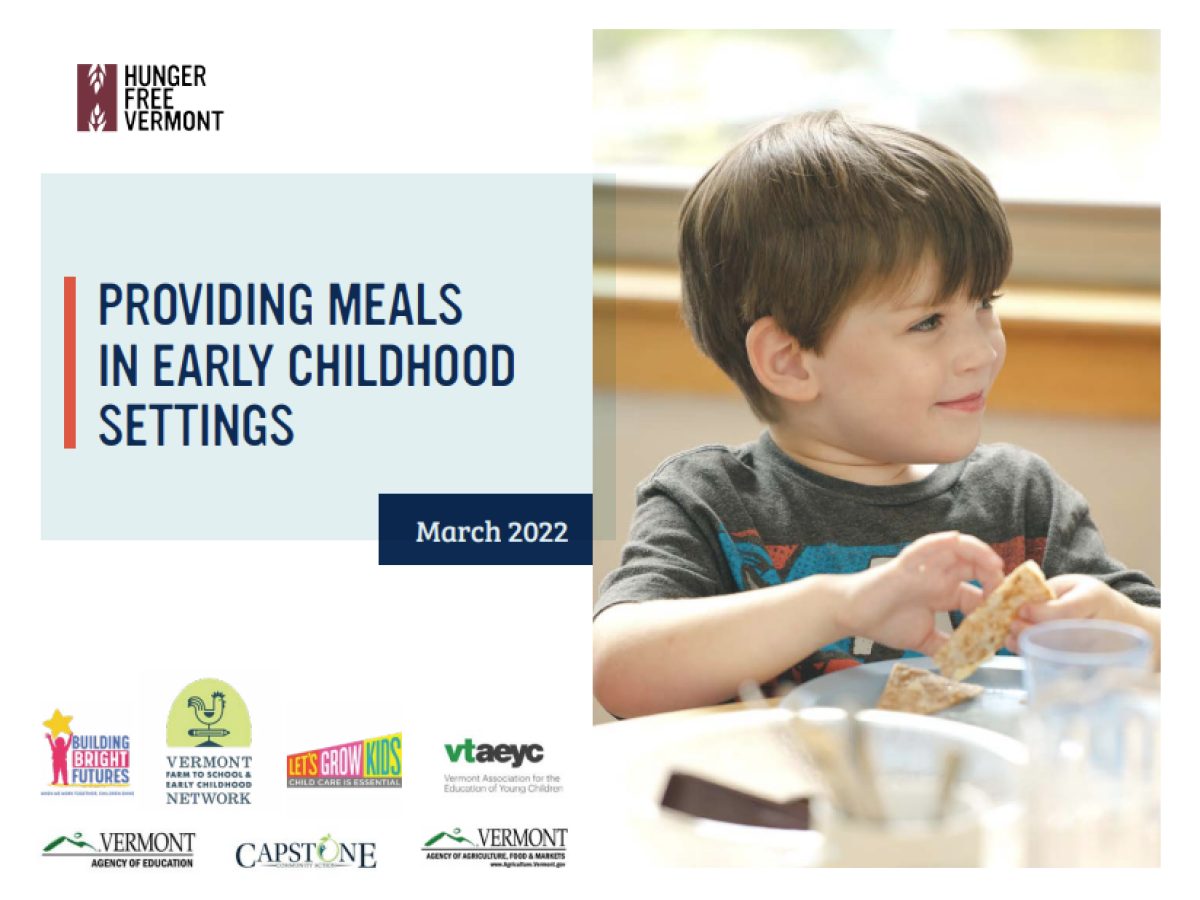Barriers to CACFP Participation
December 2, 2022

Providing Meals in Early Childhood Settings report
Hunger Free Vermont conducted a statewide survey of early childhood programs in late 2021, seeking to understand what barriers early childhood providers face when it comes to providing food to program participants. The Providing Meals in Early Childhood Settings report identified the most common barriers to operating a quality meal program as: cost of operations, paperwork, staffing shortage, and the time commitment of administering a meal program. 64.40% of respondents were CACFP operators.
Why it Matters
CACFP is vital to the nutrition security of children and adults throughout the United States, and it is necessary for program providers to have the support they need to continue to serve their communities. By understanding the barriers that prevent active or potential operators from providing quality programs, we can begin to work towards advancing nutrition advocacy initiatives and expand nutrition programming.
Top Four Barriers to CACFP
1. The cost of operating a meal program was the top barrier early childhood program operators have faced, with 65.63% of survey respondents naming cost as their primary barrier. When early childhood programs participate in federal meal programs where they receive reimbursements, such as CACFP, those reimbursements only cover the cost of procuring food. With increasing food costs and staffing shortages, reimbursements need to be higher overall and should not be based on income tiers. Pandemic waivers have allowed all CACFP operators to receive Tier 1 reimbursement levels, which participants reported as having a huge impact on their ability to continue their meal program during the pandemic. Therefore, all programs should continue to receive the same, higher reimbursement levels regardless of income area eligibility.

2. The second largest barrier to participation is the amount of paperwork involved in operating a meal program, which 59.38% of survey respondents identified as an issue.
3. 46.88% of survey respondents also identified staffing shortages as a significant barrier to program operations. Without sufficient staffing, programs do not have the capacity for procuring food, preparing meals and snacks, and administering the CACFP.
4. According to 37.50% of survey respondents, the time commitment it takes to operate a meal program is a barrier to providing a meal program. The amount of time spent procuring food, preparing food, serving food, and completing meal counts and other program requirements is too burdensome for operators to efficiently carry out a meal program.
Top Three Successes for CACFP
1. Receiving Farm to School & Early Childhood and CSA grants. 28% of survey participants identified the accessibility to these grants as directly related to the success or expansion of their program.
2. Receiving meals from local food programs through CACFP and NSLP. 22% of survey participants identified this as contributing to program success and viability.
3. Accessing food through COVID-19 related food programs, such as Everyone Eats and Farmers to Families Foodboxes. 16% of survey participants identified this as increasing food program success. With pandemic-response food programs, many programs were also able to provide families with food and meals.
What is Needed in order to Operate a Successful Program
- Full-time cook or a part-time staff member for meal preparation
- Larger kitchen space
- Universal meals
- Systems of shared electronic records for attendance and expense tracking
- More Farm to School & Farm to Early Childhood funding and support
- Meals delivered to programs in partnership with public school food service programs, other local organizations, and businesses
- Bulk buying power
- Higher CACFP reimbursement
- Equipment like refrigerators
To learn more, check out the Providing Meals in Early Childhood Settings report or Summary Infographic by Hunger Free Vermont.
